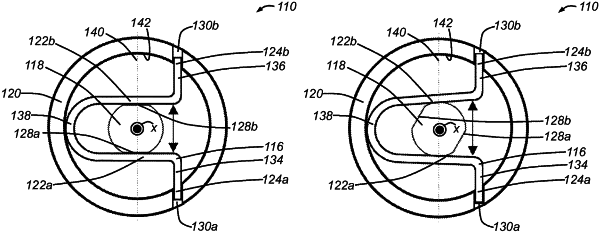| CPC F16D 7/048 (2013.01) [H02K 7/003 (2013.01)] | 11 Claims |

|
1. A torque-limiting coupler for connecting an electric motor to a rotatable input of an internal combustion engine, comprising:
a rigid frame that includes a first elastic member receiving feature formed in the rigid frame and a second elastic member receiving feature formed in the rigid frame, the rigid frame is configured to be coupled to one of the rotatable input or an output shaft of the electric motor; and
an elastic member, configured to engage the other of the rotatable input or the output shaft of the electric motor, that engages the rigid frame such that the elastic member substantially maintains its shape and inhibits angular displacement between the rotatable input and the output shaft when an amount of torque received from the output shaft is below a predetermined torque limit while also permitting angular misalignment and/or radial misalignment of the output shaft relative to the rotatable input,
wherein the elastic member includes a first end that engages the first elastic member receiving feature so that the first end slides into and out of the first elastic member receiving feature, a second end that engages the second elastic member receiving feature so that the second end slides into and out of the second elastic member receiving feature, and a curved portion that abuts an inner portion of the rigid frame,
wherein the elastic member changes shape permitting angular displacement between the rotatable input and the output shaft when an amount of torque transmitted between the rotatable input and the output shaft exceeds the predetermined torque limit, the first end of the elastic member moves away from the second end of the elastic member, and the first elastic member receiving feature and the second elastic member receiving feature positively an engage the first end of the elastic member and the second end of the elastic member to prevent movement of the elastic member relative to the rigid frame.
|